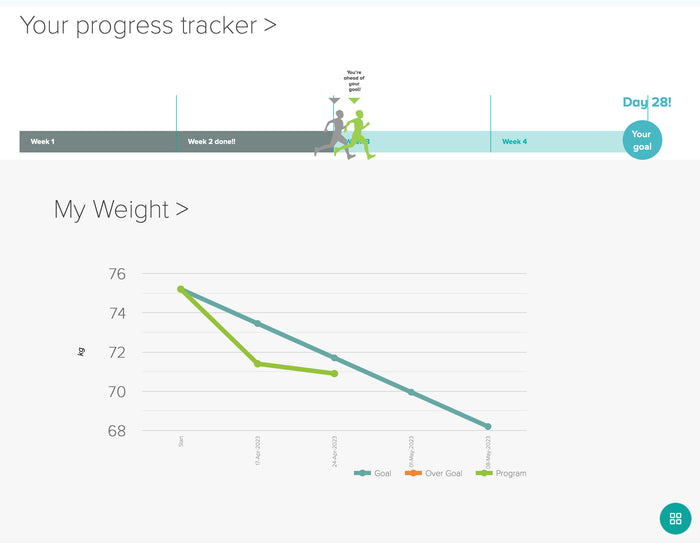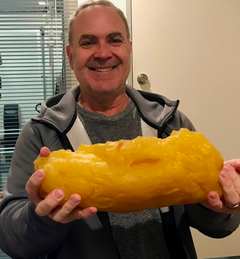THE BEST MAYO YOU’VE EVER MADE By Melissa Hartwig
For those of you who have experienced the creamy, dreamy goodness that is homemade mayo, you know exactly what I’m talking about.
It’s light, it’s fluffy, and when you’re done mixing up a batch, you probably lick the beater just like me. The flavor is so very different than store-bought mayo. It’s more alive, more richly nuanced, less heavy, and way less gloopy.
Once you’ve tried it, you’ll never go back. But making your own mayo is one of those things that sounds so amazingly foodie—something that requires a culinary degree, special utensils, and a subscription to Epicurious.
However, nothing could be further from the truth. Making your own mayo is simple—five ingredients, five minutes, and one basic kitchen implement is all it takes. However, not all mayo recipes are created equal, and along the way, I’ve learned that some mayo-making techniques work better than others.
So today, we’re sharing our definitive guide to making your own mayonnaise—the ingredients, the kitchen tools, and a few different ways you can use the finished product in your Whole30 meals.
*An emulsion is a mixture of two liquids that would ordinarily not mix together, like eggs and oil.
By slowly whisking the oil into the eggs, you create an end product that is thicker than the two original liquids.
Ingredients:
• 1-1/4 cup of light olive oil, divided
• 1 egg
• 1/2 teaspoon mustard powder
• 1/2 teaspoon salt
• 1/2 to 1 lemon, juiced
Instructions:
• Place the egg, 1/4 cup of olive oil, mustard powder, and salt in a mixing bowl, blender, or food processor. Mix thoroughly
• While the food processor or blender is running (or while mixing in a bowl with a stick blender), slowly drizzle in the remaining cup of olive oil.
• After you’ve added all the oil and the mixture has emulsified, add lemon juice to taste, stirring gently with a spoon to incorporate.
Ingredient tips and tricks
The mustard powder, salt, and lemon juice don’t really matter, but the oil choice does.
Choose a light-tasting, light-colored oil; preferably one low in polyunsaturated fat. First, make sure you use light olive oil, not extra-virgin.
(The EVOO tastes way too heavy.)
You can also use a high-oleic safflower or sunflower oil. The seeds used to make these oils have been bred to contain more healthy monounsaturated fats and less polyunsaturated fats, making their nutrition profile almost identical to olive oil. (Note, this is not the same as genetically modifying the seeds—these are not GMO products.)
The flavor of all three of these oils is very mild, making it ideal for mayonnaise. You could use avocado oil, but we find the overall flavor too heavy, and don’t recommend it. All of your ingredients need to be at room temperature.
This is really important for the emulsification process. It’s usually not an issue for the oils or the spices—these are generally left in the pantry.
Keep one lemon on the counter at all times, because warming up a lemon from the fridge takes a few hours.
To quickly warm your egg, place in a cup of hot water for about three minutes—easy. (If planning ahead, you can also leave your egg out on the counter overnight. Yep, you can really do that.)
Preparation tips and tricks
Listen to me right now: don’t bother busting out a 17-piece food processor just to make mayo. We swear by our stick blender for this recipe (among other things). They’re cordless, far easier to clean up than a blender or food processor, and relatively inexpensive. Also, please don’t try to whisk mayo by hand. I know some recipes say you can do this. Scientific studies (in our house) have proven this is not humanly possible, and will probably give you a newly discovered inflammatory condition called Mayo Elbow. Don’t even bother. You’re welcome.
The slower you pour, the thicker the mayo To get started, you can dump the initial ingredients (the 1/4 cup of oil, egg, mustard powder, and salt) into a bowl or processor and just mix—you don’t have to be careful with the first part. When you get to the “slowly drizzle” part, though, take it seriously.
Pour the remaining cup of oil in too fast and you’re left with a soupy, runny mess. The emulsion comes together best when you pour as thin a stream into the bowl as possible.
I use a Pyrex spouted measuring cup to make pouring easier, but you can also use a tip from our friend Michelle at Nom Nom Paleo and buy an empty ketchup dispenser to slowly squirt a thin stream of oil into the bowl. Pour. Slowly. So slowly you start to bore yourself. The slower you pour, the thicker your mayo. If you’re using a stick blender, use a stainless steel mixing bowl with a non-skid bottom so you can pour with one hand and mix with the other. (Or place your bowl on a silicone trivet so it stays put.) Stay away from copper or aluminum bowls here—the lemon juice can react with the metal and impart a metallic taste into your mayo.
Save the lemon juice for the very end
Finally, add your lemon juice as the last step, after your mayo has thickened up. We have no scientific evidence to support this, but our theory is that the acid in the lemon juice can mess with the emulsification process. We had far more mayo fails when we added the lemon juice first—but since leaving it until the end, zero problems. We like our mayo really lemon-y, but the more juice you add, the thinner the mixture will become. You can always err on the lighter side and add just a tablespoon now, then add more if a recipe for tartar sauce or ranch dressing calls for it.
If you have a mayo fail…
Generally, fails happen because (a) some ingredients were cold instead of room temperature, or (b) you poured the oil too quickly. If you get all the way through the process and your mayo fails to emulsify, all is not lost. Just use that batch for salad dressings, where it’s less important that the mayo be thick and creamy. The flavor is the same, and you can shake it up before pouring to create a temporary emulsion.
























